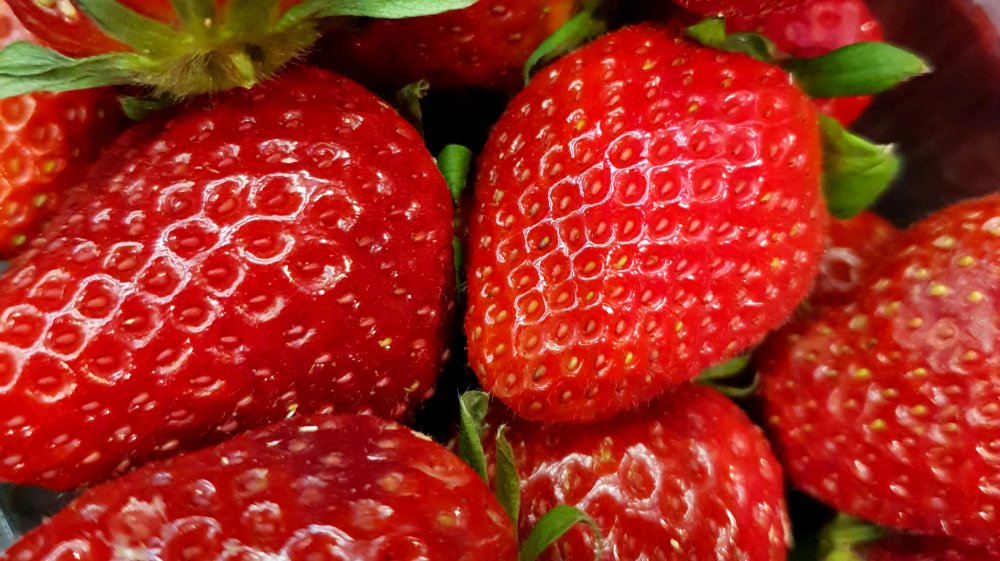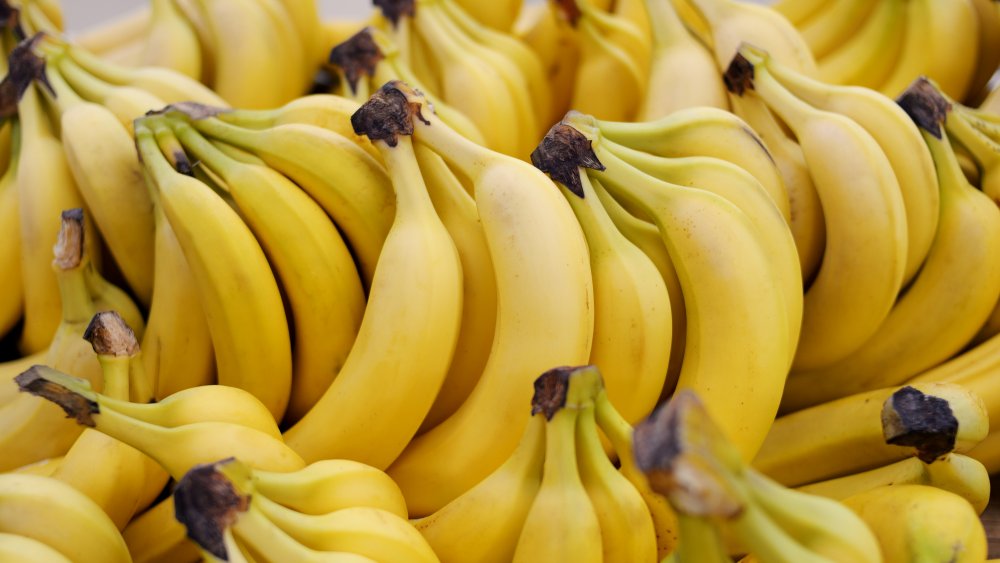The False Fact You Always Believed About Strawberries
If you thought a tomato being a fruit was weird (via Lexico), just wait until you hear about strawberries. Turns out we were wrong about strawberries all along. The name is, in fact, a misnomer and they aren't actually berries at all (via The Kitchn).
Scientifically speaking, to qualify as a true berry you have to have your seeds on the inside of the fruit (although there are other requirements that will be looked at later). As you can tell from one glance at a strawberry, the seeds are prominent on the fruit's exterior. So alas, strawberries are not true berries at all.
But what are they exactly? Technically, they're classified as "aggregate fruits," which is a term applied to fruits that have developed from more than one ovary of a single flower (via Fairchild Garden). Other examples include blackberries and raspberries. Blueberries, however, are still a true berry.
What counts as a berry if a strawberry doesn't?
In addition to having seeds on the inside of the fruit, berries also have to stem from a single flower with one ovary. Typically they have multiple seeds, although that isn't always the case. Given this new definition, there are a number of fruits that scientifically qualify as berries — although we would generally don't consider them as such.
For example, the beloved banana is actually a berry (via Stanford Magazine), even though in most cultivated varieties the seeds are so small that we don't notice them. Pomegranates, pumpkins, and watermelons are all berries as well. Avocados are technically berries, and its single pit makes it an outlier to the aforementioned rule that berries tend to have more than one seed. And that tomato mentioned at the beginning? Not only is it a fruit, but it also turns out it's a berry as well.

